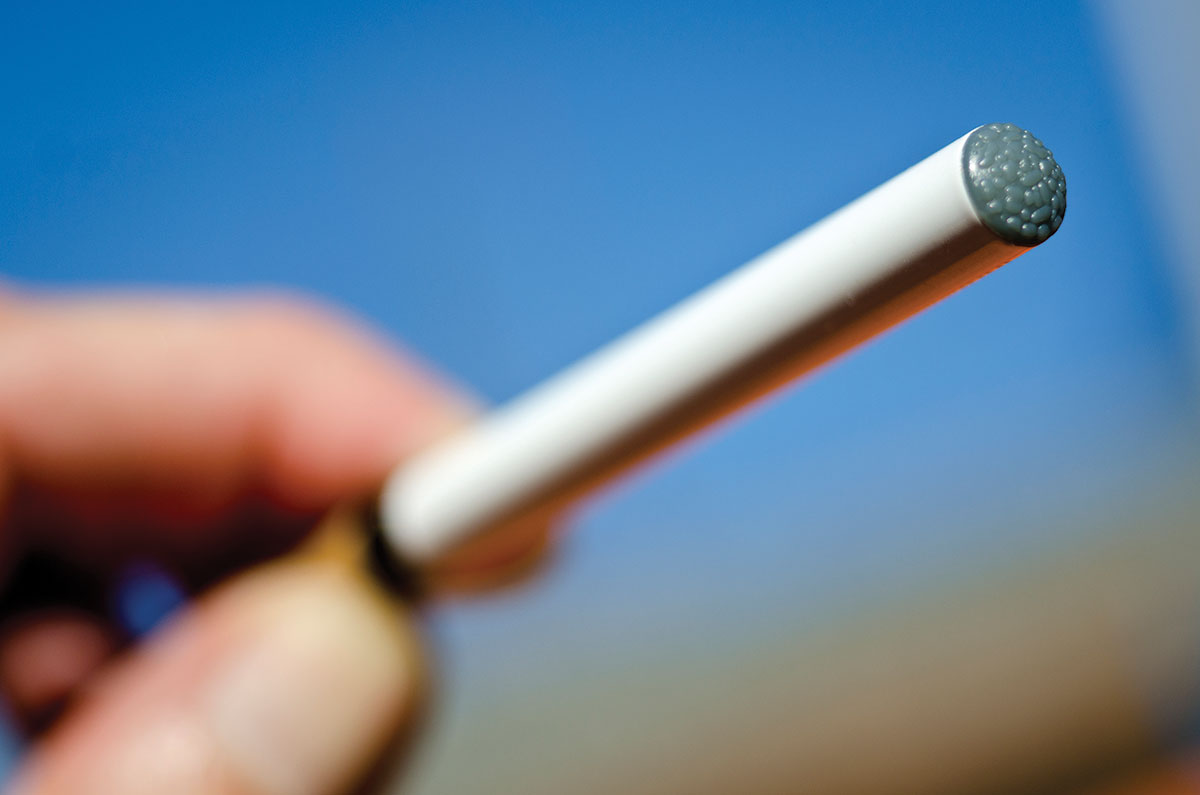
High school teachers and staff are all too familiar with the problem of teen smoking: kids skipping class to light up, smoke seeping out of bathroom stalls, tobacco wafting into class. But when electronic cigarettes hit the scene, educators at Olympia High School noticed a change. Instead of the classic smoker aroma, the smell was candy sweet. Instead of lighters, students were carrying the hard, slender pens of electronic cigarettes.
“Suddenly, these things were everywhere,” says staff member Megan Temple, an instructor at Olympia’s 'learning lab' preschool, located at the high school. “In sporting events, in bathrooms, even showing up in class. It’s a big problem.”
The popularity of e-cigarettes is exploding, and it’s a worrisome trend, says Sophie J. Balk, M.D., pediatrician and professor of clinical pediatrics at Albert Einstein College of Medicine in the Bronx, New York. Per the Centers for Disease Control and Prevention (CDC), a quarter-million middle school and high school students who had never smoked a traditional cigarette tried e-cigarettes in 2013, a threefold increase from 2011. Overall, e-cig use by students in grades 6–12 doubled to about 7 percent.
E-cigarettes are slender, cylindrical devices with an electronic heating element that vaporizes nicotine-infused liquid, also called “vape juice” or “e-juice,” available in hundreds of sweet, kid-friendly flavors, from banana cream pie to butter rum.
Because there’s no combustion, no smoke and therefore no telltale cigarette smoke smell or ash, “vape pens” are much more discreet than traditional cigarettes, so they pose a different kind of health risk to teens, says Harold Farber, M.D., pediatric pulmonologist at Texas Children’s Hospital.
E-cigarettes allow teens to use nicotine in places smoking isn’t allowed — at school, work, or in or around restaurants where cigarettes are banned — effectively increasing access to nicotine, Farber says. The vape liquid smell isn’t a smoky smell, so parents may not detect it, either.
Counter to popular opinion and marketing claims, research shows e-cigarettes are a “gateway” product of sorts, Farber says. They’re marketed as a cleaner, safer alternative to cigarettes that can help smokers quit, but research shows the reverse effect in youths: Nearly half of middle school and high school students who tried e-cigarettes in 2013 expressed an intention to smoke, compared to about one-fifth of students who had never vaped.
“One student said that her friends who started with e-cigarettes had moved on to [inhaling] other substances,” says Temple. “Anything in liquid form can be put into an e-cigarette, so the sky’s the limit.”
Most vape users are smokers, too; the CDC reports that 76.3 percent of current e-cigarette users in grades 6–12 also use conventional cigarettes. “It’s an either-or thing. They choose e-cigarettes when they want to be more discreet,” Farber says.
Discreet or not, e-cigarettes still pose all the health risks associated with nicotine, including reduced lung function, narrowed blood vessels, heart strain and risk for serious, long-term addiction.
“Nicotine is highly addictive, and it seems that teens are uniquely susceptible to the risks of nicotine addiction. When you look at adult smokers, close to 90 percent started before age 18,” Farber says.
Health risks aren’t limited to addiction; nicotine liquid is hazardous if ingested, inhaled or absorbed through the skin. The CDC reports that poison center calls involving e-cigarettes jumped from one call per month in 2010 to
Legal limbo
Appealing and addictive, e-cigarettes are also more accessible to teens than conventional cigarettes. Although some states, including Washington, ban e-cigarette sales to minors, vape pens and juice are available in a few clicks online.
Currently, no federal ban prevents youths from purchasing e-cigarettes or the nicotine liquid. Federal regulation of e-cigarettes is currently pending; in the spring of 2014, the FDA released a proposed rule that would expand the ban on tobacco sales to minors to include electronic cigarettes and liquid. As it stands now, the rule only extends to conventional cigarettes, smokeless tobacco and roll-your-own tobacco products.
A final rule is expected in 2015, according to an American Academy of Pediatrics spokesperson. But it’s not clear whether or not the rule would ban the sale of vape pens, because they don’t contain nicotine — so youths may still be able to obtain these items online.
Buzz beaters
The best way to keep teens away from e-cigarettes: Talk to them in terms they care about.
“Teenagers don’t care as much about losing years of their life, because that’s so far in the future,” Farber says. “Instead, talk to them about how nicotine reduces athletic performance. Tell them it can age them and affect how their skin looks.”
Avoiding exposure to tobacco marketing — retail displays, print ads and digital promotion — is important, too. American youths see 559 tobacco ads per year, and those exposed to more sources of tobacco advertising are the most likely to smoke.
At Olympia High School, Megan Temple hopes the e-cigarette novelty wears off. The school drafted e-cigarette policies that seem to be helping. That’s a positive step, because e-cigarettes appeal to teens and introduce nonsmokers to tobacco, Temple says. “Any e-cigarette use at school or in teens is a problem.”












